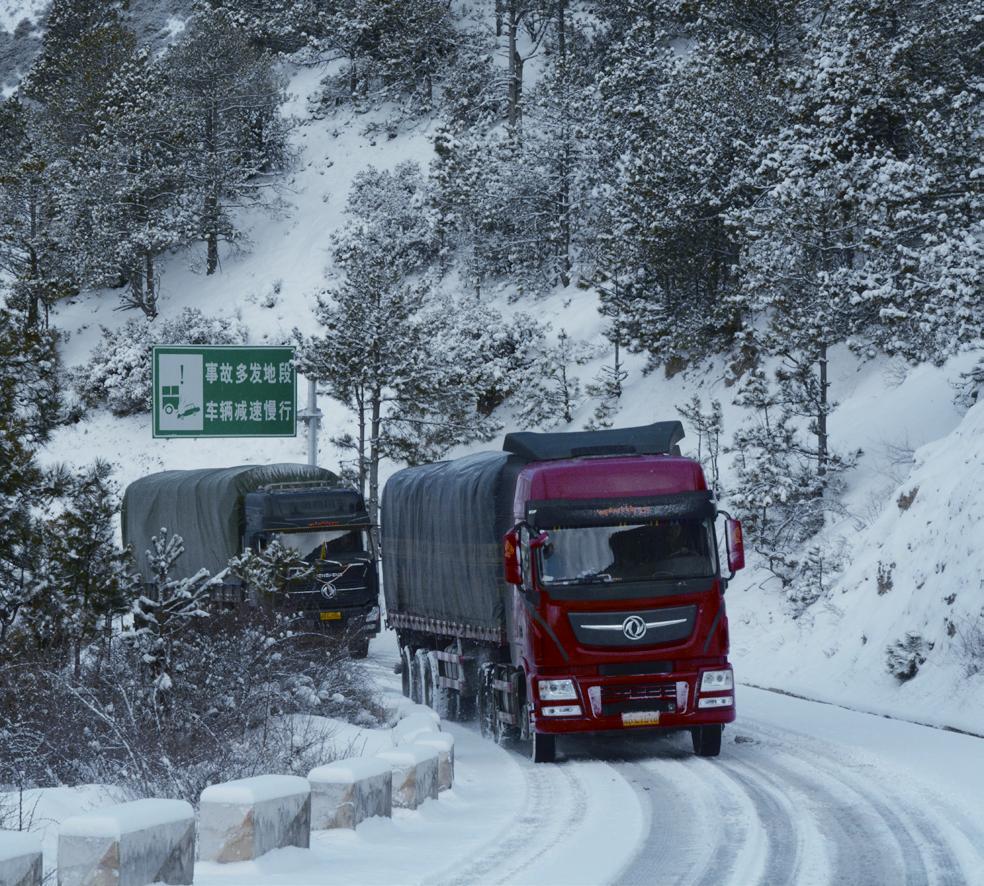低纬度高海拔的中国葡萄酒
2020-07-24TersinaShieh
Tersina Shieh
云南省的天氣温热,本来不适合葡萄的生长,但因为有高海拔的弥补,所以品质还不错。香格里拉的葡萄园位于滇西北毗邻川藏的青藏高原,种植面积2000余亩,最高海拔达2900米。目前在云南仅有不到10家酒厂,其中3家仅生产冰酒。托朋友戴鸿靖的福(他也是一位酿酒师),我们得以在寒冷的1月里拜访了其中4家酒庄,亲身体验了在如此偏远的地区酿酒,究竟是件多么有挑战的事情。
香格里拉酒业是云南最大的国有酒庄,这家酒庄成立于20年前,成立初期本打算酿造青稞酒,但酒庄却在产区内发现了一批健康的老藤葡萄。接着,香格里拉酒业便开创了葡萄种植的先河,如今,酒庄正从分布在168个乡村和320个地块的800多公顷葡萄园里采购葡萄。经理李达带我们参观了几个葡萄园。在海拔2200米左右的一些葡萄园里,种植着以赤霞珠为主的红葡萄品种,但在大约5年前,酒庄也开始种植品丽珠、西拉和梅洛。霞多丽种植在海拔2800米-2900米较高的葡萄园中。我们只品尝了霞多丽、西拉和玛桑这三种葡萄酒,它们拥有新鲜的酸度和活泼的果味。霞多丽葡萄酒让我感到惊喜,我还以为这款酒会橡木桶味过重,但事实并非如此。
我们继续沿着湄公河,顺着一条蜿蜒的道路前往茨中村。150年前,法国的传教士在茨中引入了酿酒技术,茨中教堂的围墙内仍然种植着老藤玫瑰蜜(一种欧美杂交葡萄品种)。白舸是一位常驻上海的法国人,他曾在2010年拜访茨中村后,呼吁要恢复传教士的酿酒活动。最终,他在2013年建立了霄岭酒庄。这是一个只有3公顷的小酒庄,种植着赤霞珠、梅洛、佳美娜和霞多丽,这些葡萄分别散布在附近的4个村庄里。酒庄前2个年份的葡萄酒是由瑞士酿酒师酿制,但从2017年起,白舸聘请了一位在勃艮第和索诺玛都有酿酒经验的中国酿酒师:牟超。我们品尝了还在橡木桶里的样本酒,包括:2018年份梅洛和赤霞珠,以及2017年份赤霞珠/梅洛的混酿,这些葡萄酒将橡木的味道完美融合,展现了良好的潜力。酒庄在2019年只生产了15000瓶葡萄酒,但白舸正计划尝试种植更多的葡萄品种,包括黑皮诺和西拉。
第二天,我们冒险来到海拔2600米的阿东村,这里是国际知名的云南酒庄敖云的故乡。迎接我们的是陡峭的山坡以及令人叹为观止的雪景葡萄园,酒庄经理雷米·文森特向我们详细地介绍敖云酒庄是如何建成以及它的风土特色。很显然,葡萄园里会盖上这么厚一层雪的情况并不常见,我们真的很幸运能够见到如此壮观的景色。曾就职于酩悦·轩尼诗的已故酿酒师托尼·乔丹生前历时四年,在中国艰辛地寻找最适合种植葡萄的地区,敖云酒庄就是他所找到的答案。酒庄会在葡萄栽培团队的严格监督下,从28公顷的赤霞珠、品丽珠、西拉和小味儿多葡萄园以及处于2200米-2600米海拔范围内的120户农田里采收葡萄。敖云酒庄每瓶葡萄酒的零售价约2500港元(300美元),这是中国最贵的葡萄酒,但也自有它的原因。酒庄的平均产量只有20百升-25百升/公顷,所有的葡萄酒都会在桶中陈酿约15个月(50%新桶和50%一年桶)。由于高海拔地区的葡萄酒往往表现力不足,所以混酿过程会在香港低海拔处进行。最终酿成的葡萄酒只有两万瓶。我们品尝的2018年份和2019年份桶中样酒来自不同的村庄,这些葡萄酒都很浓郁、漂亮、优雅。
沿着敖云酒庄这条路一直走,就到了我朋友戴鸿靖的小酒庄,他生产的葡萄酒酒标是“小圃酿造”。酒庄的霞多丽来自附近的葡萄园,采用野生酵母发酵后浸皮,然后在旧橡木桶中进行陈年。戴鸿靖酿造的葡萄酒与敖云酒庄风格完全不同,非常清新、纯净,令人兴奋。我不禁开始联想人和风土的因素究竟会给葡萄酒带来多大的影响。显然,葡萄采收的时间以及葡萄酒的制作方式会对最终的风格有着重要的影响。2018年葡萄酒是戴鸿靖在云南酿出的第一个年份(霞多丽和赤霞珠),此外他还用来自宁夏的葡萄酿出了6款葡萄酒。
李达、贝特朗、雷米和戴鸿靖都认为,香格里拉为葡萄树的生长提供了更加有利的风土条件。香格里拉以北,海拔6740米高的梅里雪山阻隔了来自印度洋的潮湿空气,因此该地区处于干燥的生长季,年降雨量在300-600毫米之间。山区的风土以及高海拔导致昼夜温差大,夏季凉爽,平均气温在23°C左右,这让葡萄可以缓慢成熟并且将酸度保持得很好。雷米进一步解释道:由于香格里拉受到山影的影响,所以日照时间比波尔多少了2个小时。然而,如此高海拔地区形成的强烈紫外线会使单宁更加成熟。葡萄的转色期也会比波尔多长15-25天,采收期则是从9月的第一周开始持续10周,一直到11月的第二周结束。李达说,冬天的温度往往在-8℃至-10℃,但不会持续太久,为了保护葡萄藤则需要进行埋土。
这样看来,香格里拉比烟台和宁夏更具优势。烟台处于中国东部沿海地区,雨量充沛。宁夏处于中国西部地区,由于葡萄生长期短常会导致单宁不成熟,尤其是赤霞珠。当然,香格里拉也并非全无挑战,这里交通不便,电力也不太可靠。香格里拉的酒庄距离丽江比较近,与葡萄园之间的距离约300公里,到了葡萄采收期时需要用卡车运输5个多小时来进行下一步的加工。我们在访问产区时,山口和机场的主干路因为天气不好而关闭了。为了从丽江到离葡萄园最近的德钦,我们坐着巴士行驶了400公里,花了10个小时!另一个问题就是劳动力,酒庄需要在夏季蘑菇采收期时与蘑菇行业竞争劳工。除此以外就是费用,仅葡萄栽培费用,包括葡萄园租赁和劳动力在内,就高达5500元/亩(超过9万港元/公顷)。
除非香格里拉的基础设施和交通能够有极大的改善,不然这里的葡萄酒依然会是小众且价格高昂。我们必须要接受这个事实:这就是来自失落秘境的葡萄酒。
Yunnan provine maybe too warm for vine growing but it is more than compensated by the high altitude. The vineyards in Shangri-la, the Tibetan highland in the northwest of Yunnan adjacent to Sichuan and Tibet, are planted above 2,000, and up to 2,900m.
At present, there are less than ten wineries in Yunnan of which three are only making ice wine. Thanks to friend and winemaker Ian Dai, we visited four of them in the cold month of January, experiencing first hand the challenges of making wine in such a remote place.
Shangri-la Winery is state-owned and the biggest in Yunnan. The company was set up 20 years ago with the intention to make Barley wine but came across some healthy old vines in the region. It then pioneered grape growing and is now sourcing grapes from over 800 ha of vineyards spread among 168 villages and 320 blocks. Manager Li Da showed us a few vineyard sites. The slightly lower vineyards at around 2,200m are planted with red grape varieties dominated by Cabernet Sauvignon but the company also started planting Cabernet Franc, Syrah and Merlot about 5 years ago. Chardonnay was planted at higher vineyard site between 2,800 and 2,900m. We tasted only three wines, Chardonnay, Syrah and Marsan(Reserve Cabernet Sauvignon) and they were good with fresh acidity and lively fruit characters. I was pleasantly surprised by the Cabernet Sauvignon which I half-expected might be too oak dominate but it was not the case at all.
We continued down the Mekong River on a winding road to CiZhong , where winemaking was introduced by the French missionaries around 150 years ago and there are still old vines of Rose Honey (a Vitis Vinifera x Vitis Labrusca hybrid) grown within the church walls of CiZhong. Bertrand Cristau, a Frenchman based in Shanghai, had a calling to revive the missionaries winegrowing activity after his first visit to the region in early 2010. He eventually set up Xiaoling Estate in 2013, a small outfit with only 3 ha of Cabernet Sauvignon, Merlot, Carmenere and Chardonnay scattered in four villages nearby. The winemaker for the first two vintages were a Swiss winemaker but since 2017, he engaged a Chinese winemaker Mu Chao with experience in Burgundy and Sonoma. The barrel samples we tasted, 2018 Merlot, 2018 Cabernet Sauvignon and 2017 Cabernet/ Merlot blend, were well-integrated with discreet oak and showed good potential. They only made 15,000 bottles in 2019 but Bertrand is planning to experiment with more grape varieties such as Pinot Noir and Syrah.
The next day we ventured to the village Adong at 2,600m above-sealevel, home to the most internationally-known Yunnan wine Ao Yun. We were greeted by the stunning snow-covered vineyard view against steep slopes and vineyard manager Rémi Vincent, who thoroughly explained the set up of Ao Yun and its terroir. Apparently, it is not common at all to have that much snow on the vineyard and we considered ourselves lucky to be treated with such an impressive view! Ao Yun was the result of a painstaking 4-year search for the perfect wine-growing site in China by the late winemaker Tony Jordan of Mo?t-Hennessy. The estate sources grapes from 28ha of Cabernet Sauvignon, Cabernet Franc, Syrah and Petit-Verdot between 2,200 and 2,600m altitude tended by 120 families under the strict supervision of Ao Yun viticulture team. Retailed at around HK$2,500(USD300) per bottle, it is the most expensive wine from China and for a reason. Average yield is only 20-25hl/ha and all wine is aged in barrel(50% new and 50% one year old) for around 15 months. Since wine is less expressive at high altitude, blending is done in the lower altitude of Hong Kong. Only 20,000 bottles of wine are made. The 2018 and 2019 barrel samples we tested were from different villages and they were all dense, pretty and polished.
Just down the road of Ao Yun is the mini-winery of my friend Ian, who makes wine under the label Xiao Pu. The Chardonnay was sourced from vineyards close by, fermented with wild yeast and skin contact then aged in old barrels. The wine is the complete opposite style of Ao Yuns– fresh, pure and exciting. I couldnt help but wonder the human terroir factor. When the grapes are picked and how the wine is made certainly have a major impact of the final style. 2018 is Ians first vintage in Yunnan(Chardonnay and Cabernet Sauvignon) and he also makes 6 wines with grapes sourced from Ningxia.
Li Da, Bertrand, Rémi and Ian all believe Shangri-la presents a more favourable terroir for growing vines. The Meili Snow Mountain at 6,740m above sea level north of Shangri-la blocks the humid air from Indian Ocean therefore the area enjoys a dry growing season with between 300 and 600mm annual rainfall. The mountain terroir and high altitude result in high diurnal temperature difference and cool summer with average temperature around 23oC that allows grapes to ripen slowly and retains acidity. Rémi further elaborated that comparing to Bordeaux, the vineyards receive 2 hours less sunshine because of the shade created by the mountains. However, the intense UV light at such high altitude enables riper tannin. The veraison period is also 15-25 days longer than in Bordeaux and harvest can be up to 10 weeks from the first week of September until the second week of November. Li Da said winter temperature can be -8 to-10oC but it is not over a prolong period therefore vines do need to be buried under soil for protection.
In this respect, Shangri-la has advantages over Yantai in the eastern coast of China where rainfall is abundant, and Ningxia in the west where the short growing season often results in unripe tannin especially in Cabernet Sauvignon. However, Shangri-la is not without challenges. The region is not easily accessible and electricity not reliable. The winery of Shangri-la Winery is closer to Lijiang, some 300km from the vineyards and grapes have to be trucked over 5 hours for processing at harvest. When we were there, the main road over the mountain pass and airport were closed because of bad weather, and it took us 10 hours for a 400km bus ride from Lijiang to Deqin, the town closest to the vineyard sites! The other issue is labour as the wineries have to compete with the mushroom industry for labour during mushroom picking season in summer. On top of this is the cost, only viticultural expense including leasing of vineyard and labour is a whopping RMB5,500/mu (over HK$90,000/ha).
Unless the infrastructure and transportation are vastly improved, wine from Shangri-la will remain niche and premium. Perhaps we just have to accept the fact that the wine indeed comes from a lost paradise.
